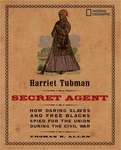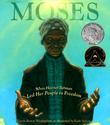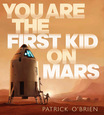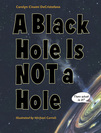For more information, read the article "Important Win for Fair Use and Babies Who Dance" by Carrie Russell.
You can see the video that started it all below.
|
What does a dancing baby have to do with copyright? You might be surprised! It all started when a mother posted a brief video of her baby dancing to the Prince song "Let's Go Crazy" to share with family and friends. She received a takedown notice from the rights holder (Universal Music corp.) and her video was promptly removed from YouTube. But then she decided to fight back. A San Francisco Appeals Court just ruled that rights holders must think about whether or not a video is fair use before sending a take down notice.
For more information, read the article "Important Win for Fair Use and Babies Who Dance" by Carrie Russell. You can see the video that started it all below.
0 Comments
 When a celebes crested macaque took this picture of itself, it set off a storm of publicity that would end in a ruling from the US Copyright Office. It all started when nature photographer David Slater went to Indonesia to photograph a group of macaques. After the monkeys got used to his presence some bolder ones decided to grab his camera. Slater decided to set up the camera so that it would be prepared to get a good facial close up if another monkey grabbed his camera and eventually one did. He enjoyed watching the macaque play with its new toy and while most of the pictures it took weren't very good, one where the monkey turned the camera on itself turned out fantastic. It was so great that it caught the eye of one Wikipedia volunteer editor who decided to upload it to the online encyclopedia. This added it to its Wikimedia Commons database of images to share freely. The editor reasoned that because the monkey took the picture and only humans can own copyright the picture is therefore in the public domain (images that are free for anyone to use.) But David Slater disagreed. He argued that the monkey selfie never would have happened if he hadn't brought his equipment there, got the monkeys acclimated to him, noticed what they were doing, and set up the right lens, etc to get a good shot. Slater asked Wikipedia to remove the image. After discussing the issue, the editors denied his claim. It is still available on wikimedia commons, credited to the unnamed macaque and listed as being in the public domain. The latest compendium of practices issued by the US Copyright Office says that it will not register works made by non-human animals and even specifically lists "a photograph taken by a monkey" in its examples. What do you think? Should Slater own the copyright to the image because he arranged for the shot to be taken? Should pictures taken by monkeys belong to everyone? What might this mean for professional photographers and their incentive to produced shots like these? What might it mean for amateurs looking for media to freely remix? Let us know what you think in the comments. References Gibbs, Samuel. "Monkey Business: Macaque Selfie Can't Be Copyright, Say US and UK." The Guardian. The Guardian, 22 Aug. 2014. Web. 9 Sept. 2014. http://www.theguardian.com/technology/2014/aug/22/monkey-business-macaque-selfie-cant-be-copyrighted-say-us-and-uk Stewart, Louise. "Wikimedia Says When a Monkey Takes a Selfie, No One Owns It." Newsweek. Newsweek, 28 Aug. 2014. Web. 9 Sept. 2014. http://www.newsweek.com/lawyers-dispute-wikimedias-claims-about-monkey-selfie-copyright-265961 Saturn has dozens of moons, but Titan stands out from the pack. It is Saturn's biggest moon and the second largest in our solar system (The biggest is Jupiter's Ganymede.) Not only is Titan bigger than our moon, it is bigger than the planet Mercury. Titan was first discovered by the Dutch astronomer Christiaan Huygens on March 25th, 1655. As the anniversary of this date approaches, it's a wonderful time to learn more about this mysterious and unique moon. For years, Titan remained a mystery. It has a thick atmosphere of nitrogen, methane, and ethane that hid its surface from cameras for years. It is the only moon in our solar system that is known to have a planet-like atmosphere, and it may even resemble Earth's atmosphere in primordial times. In 1997 the Cassini launched with the Huygens probe. In 2005 the Huygens Probe landed on Titan, seeing the surface for the first time. Since then our knowledge of Titan has grown immensely. Data collected by Cassini sugest the presence of an underground ocean on Titan. Titan even appears to change according to seasons and time of day. It may also look younger than it really is because its craters are slowly being filled in. If you would like to learn more about Titan, Saturn, or the Cassini-Huygens Mission NASA's website has the lastest, up-to-date information as well as gorgeous images and videos to browse. You can also watch the TED talk from 2007 by the leader of the Imaging Team on the Cassini mission below.  March is women's history month and this weekend, March 10th, is Harriet Tubman's birthday. Harriet Tubman is perhaps best known as a conductor of the underground railroad, where she led over 300 enslaved people to freedom without losing a single person. She was also involved in the Civil War. She was a nurse, a cook, and a spy for the Union. Through her work as a spy, she became the first woman to lead a military expedition in American History. If you'd like to celebrate women's history month or this courageous woman's birthday, you can find more information in the resources below. Book Resources This nonfiction chapter book is full of fascinating information about Harriet Tubman's life, focusing on her time as a Union Spy. Well-researched and containing information and pictures from primary sources, this book will satisfy fans of history, biography, and spy adventures. Read the book to find out how slave songs were used to pass secret messages, how spy rings provided the Union with intelligence, and how various spying techniques worked from ciphers to drops. Harriet Tubman, Secret Agent by Thomas B. Allen  This biography covers Harriet's life from birth to death. The large text and black-and-white illustrations throughout make the format friendly for younger readers. Separate, topical pages throughout provide additional context to help better understand Harriet's life and the time she lived in. Who Was Harriet Tubman? by Yona Zeldis McDonough, illustrated by Nancy Harrison  This nonfiction picture book follows the lives of Harriet Tubman and Sojourner Truth and the parallels and eventual intersection of their lives. A quilt motif is contained in the narrative which is echoed in the illustrations that show words and pictures as being stitched together. When Harriet Met Sojourner by Catherine Clinton, illustrated by Shane W. Evans  This atmospheric picture book describes Harriet's escape from slavery and her spiritual journey as she was called to work on the Underground Railroad. Kadir Nelson's gorgeous artwork sets the tone for each part of the story and immerses the reader in the setting. Moses: When Harriet Tubman Led Her People to Freedom by Carole Boston Weatherford, illustrated by Kadir Nelson  An Apple for Harriet Tubman tells a story from Harriet Tubman's great-niece about Harriet's love of apples and how they came to represent freedom for her. An Apple for Harriet Tubman by Glennette Tilley Turner, illustrated by Susan Keeter  This biography collection from the award-winning author Andrea Davis Pinkney describes the lives and courageous actions of women like Harriet Tubman, Sojourner Truth, and Rosa Parks and how they stood up in the face of oppression and prejudice to fight for equality and freedom. Let It Shine: Stories of Black Women Freedom Fighters by Andrea Davis Pinkney, illustrated by Stephen Alcorn Database ResourcesMCDS subscribes to several online databases. Ask or e-mail Tessa or Erica if you need the login information.  Chelsea House Biographies online has a detailed biography about Harriet Tubman (and many others) including a timeline, photographs, and articles on related topics such as quilt codes and slave spirituals.  You can access Discovery Streaming through ed1stop. It contains many videos and clips about Harriet Tubman, life in her era, and the underground railroad. You can search by grade level to find a whole video or a clip to show to a class or for students to view at home. Online Resources Portrait by H.B. Lindsley
It's been exciting to watch the progress of NASA's Mars Rover as it collects data that will improve our understanding of the universe. We have many books here at the library for aspiring astronomers or anyone who would like to learn more about the universe and our red neighbor. Upper schoolers who would like the chance to find out more about NASA scientists first-hand should consider entering the Cassini Scientist for a Day Essay Contest being held by NASA.  You Are the First Kid On Mars by Patrick O'Brien This book puts readers in the middle of the action by addressing them directly and describing what it would be like to be the first kid on Mars. Extrapolation of future advances is combined with facts about Mars and space travel. The book is beautifully illustrated in the dusty, red palette of Mars throughout.  If you want to know more about astronomy in general and dispel some popular misconceptions, Is There Life on Other Planets? by Gregory L. Vogt is an excellent choice. It covers everything from 'are there really UFOs?' to 'is there sound in space?' in an appealing, magazine-like format.  For questions more specific to black holes, A Black Hole is Not a Hole by Carolyn Cinami DeCristofano is a great resource. With beautiful illustrations by Michael Carroll, clear descriptions, and clever analogies throughout DeCristofano makes a difficult concept easy to understand even for young readers. In the process of explaining black holes she also explains gravity, star formation, and many other aspects of astronomy making this a great general overview of the subject as well.  Moonshot by Brian Floca will inspire young readers to learn more about space exploration by describing the historic flight of Apollo 11 with simple language and engaging illustrations.  For older readers, Team Moon by Catherine Thimmesh provides more information about Apollo 11 and includes photographs from the mission throughout.  If you want to know more about what it is like to work as a scientist who studies these phenomena, The Mysterious Universe by Ellen Jackson follows Alex Filippenko and the High-Z Supernova Search Team as they explore the mysteries of the universe. Ample photographs by Nic Bishop help readers visualize the life of a scientist.  Boy, Were We Wrong About the Solar System by Kathleen V. Kudlinski and illustrated by John Rocco teaches readers about the history of astronomy by reviewing some of the theories that have been disproved. It also shows readers that the important thing is to think creatively and search for the truth, even if that means making mistakes along the way.  Going Around the Sun: Some Planetary Fun by Marianne Berkes and illustrated by Janeen Mason is a basic introduction to the solar system for young readers. Using rhyming text and colorful illustrations as well as interesting facts, this book will spark children's curiosity.  For those still coping with the re-classification of Pluto, When Is a Planet Not a Planet? by Elaine Scott explains how our understanding of the universe has improved and why that has led to Pluto officially becoming a dwarf planet.  On the bright side as 11 Planets: A New View of the Solar System by David Aguilar explains, we have also gained two other dwarf planets: Ceres and Eris. So at least Pluto has some company. This book provides a basic overview of all the planets for those looking for an introduction to our current view of the solar system.  As Pluto's reclassification has reminded us, our understanding of the universe is always changing and improving. As Curiosity explores Mars there will be new data coming in daily. For the latest information, NASA's website is the place to go.  NASA also has a variety of apps to provide the latest news and images directly to your mobile device. Try the Lunar Electric Rover Simulator app for a chance to see what it's like to control a rover. Last but not least, if you want to make your own observations by doing a bit of star gazing, the GoSkyWatch app can help guide you. I've heard a lot of conversations about The Hunger Games in the LRC lately. As long as students are talking about it, why not use this media craze as a springboard for other discussions and further reading? I've rounded up some resources that I found interesting.  This article on Discovery news explores why Panem might have hovercraft and force fields but no internet, the theme of technological imbalance in science fiction novels, and how the technology in a society reflects its political and social policies.  This infographic from GoodReads explores the different waves of dystopian fiction from Brave New World to The Hunger Games and how the dominant themes in dystopian fiction reflect the anxieties of the times in which they were written.  Awesome Stories provides real-life context for this science fiction story using many primary sources illuminating such areas as the Appalachia region that District 12 is based on, coal mining, totalitarian governments, and tributes in ancient Greece. Complete with 'issues and questions to ponder' for each section, links to pictures and videos, and recommended sources for further reading.  Scholastic's official discussion guide for all three books in the trilogy provides many great questions that delve deeper into the text as well as historical and literary connections and recommended further reading fiction and nonfiction lists.  Common Sense Media's list of books like The Hunger Games provide some great recommendations that can be filtered by age range.  Visit HungerGamesLessons.com for a roundup of different ways that teachers are using The Hunger Games in their classrooms.  @ your library has a round up of impressive fan-made book trailers for The Hunger Games to inspire students to create their own content. Lastly for those who want a more hands-on activity, watch Feast of Fiction's video on how to make bread like Peeta: Let me know if you liked the links and please share any further resources you have in the comments.
|
Categories
All
Archives
May 2024
|